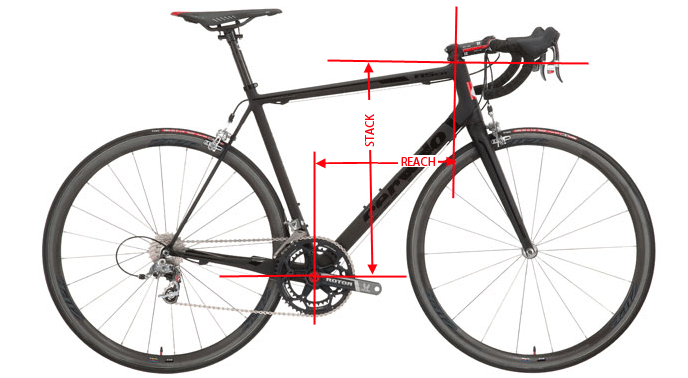Bike geometry is the collection of measurements (lengths and angles) that make up a bike frame. In short, everything on a bike can be changed, but the geometry cannot. Looking at geometry charts on manufacturer’s websites can be confusing, but all those numbers translate into very real and understandable concepts.
There is a lot to know about bike geometry, but understanding the basics can go a long way in ensuring you choose the right bike for your style of riding. Bike geometry can help you understand how a bike will handle, feel, and how comfortable it will be to you.
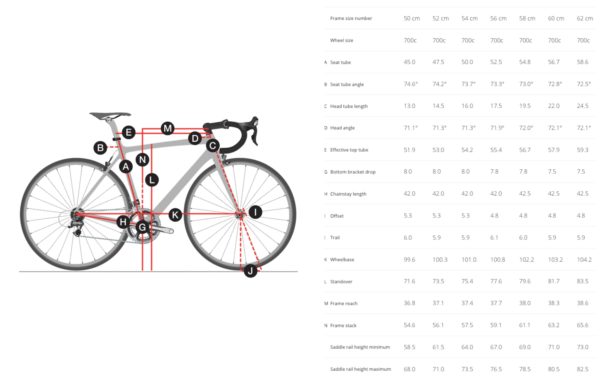
Most bike manufacturers provide bike geometry charts within the description of the bike, but what is included does vary. Most will include frame size, head and seat tube lengths, top tube length, wheelbase, and chainstay length. Others will also include stack and reach measurements, fork rake, bottom bracket drop, and trail.
Stack and Reach
Stack and reach are the two fundamental elements that can help you determine right away if a bike will fit you. This is especially important because it helps standardize fit between size and manufacturer. Even if a bike is labelled as “medium” or 53cm, the actual fit can differ by up to 2 cm.
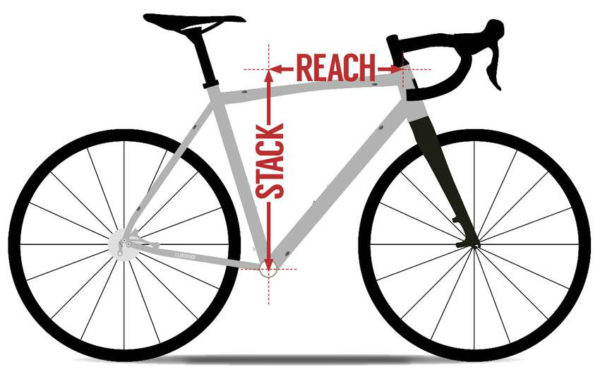
- Stack is the vertical distance (in cm) from the center of the frame’s bottom bracket to the top of the head tube, where the fork passes through the frame. It gives an indication of how tall a frame is.
- Reach is the horizontal distance from the center of the bottom bracket to the top-centre of the head tube. This gives an indication of how long a frame is excluding the stem.
Head Tube Angle, Fork Rake, and Trail
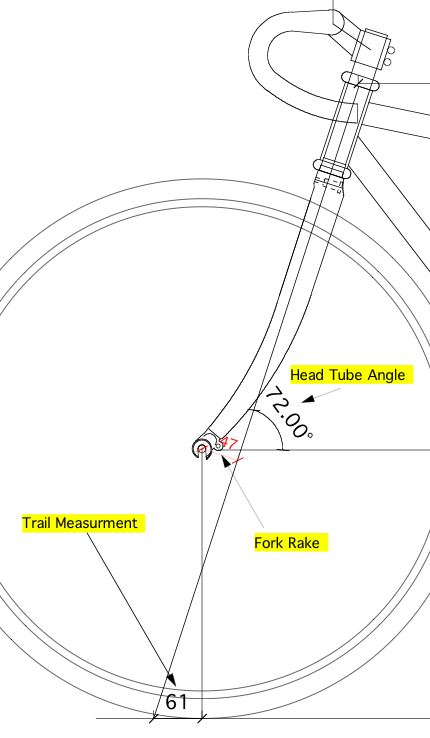
Head Tube
The head tube angle is the angle of the head tube in relation to the ground, with the angle being either ‘slack’ or ‘steep.’ The classic head tube angle for a road bike is 73 degrees, so a steeper angle (higher number) will mean less effort to steer making it better for high speeds. A more slack angle (lower number) may require more effort to steer, but perform much better at slow speeds.
Head tube length is just what is sounds like. Longer head tubes result in a more upright riding position. Short head tubes lower the front of the bike, putting you in a more aerodynamic position.
Fork Rake (Offset)
Fork rake or fork offset is the distance between the steering axis and the wheel center. Whether the fork is curved forward or is straight, but angles, if the offset is the same then it will handle the same. Generally speaking, less fork rake will increase the trail as the center of the wheel is moved back from the steering axis, and more fork rake means less trail.
Trail
Trail is a bit more complicated, and can be difficult to wrap your brain around. Think of it as the tire patch trailing behind the steering axis, determined by the head tube angle and the fork rake. The steeper the headtube angle, the less trail there will be.
Its impact on the feel of the bike is arguably more important and much simpler. A small amount of trail will result in a fast handling bike, meaning it will require less rider input and will handle well at high speeds. The downside is a certain amount of twitchiness, making for a rougher ride. A large amount of trail will result in a slow handling bike, so it will take more work from the rider to steer at high speeds, but will feel more stable and smooth.

Bottom Bracket Drop
The bottom bracket drop is effectively how low you sit on the bike. It is measured by the vertical distance the center of the bottom bracket sits below the wheel axis.
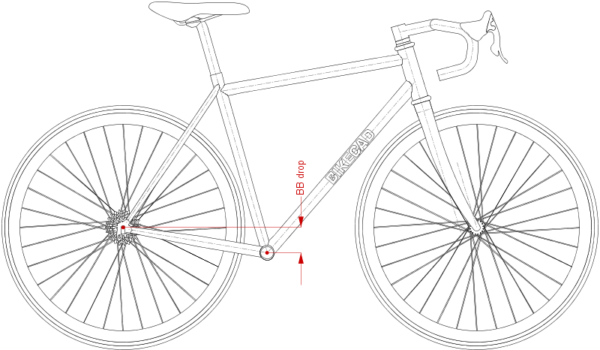
The lower (more) the bottom bracket drop, the better the bike will corner and the faster it will respond (as your center of gravity is lower). The issue is pedal clearance, because the bottom bracket can only be so low before the pedals will catch ground while leaning into a corner.
Less bottom bracket drop will feel more stable at slow speeds, but will be reluctant to corner. This means more input from you through the handlebars to corner.
Seat Tube Angle
The seat tube angle is the angle of the seat tube in relation to the ground. This angle will generally be between 71-74 degrees, and doesn’t vary as much as the head tube angle. You can effectively influence the seat tube angle by changing the saddle position to be more slack or steep.
Chainstay Length
Chainstay length is the horizontal distance from the center of the bottom bracket to the center of the rear axle.
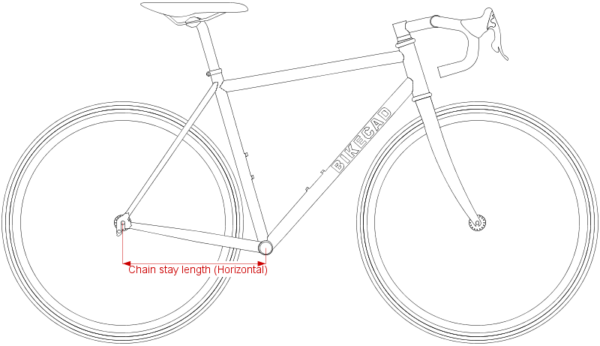
The chainstay length impacts the length of the wheelbase (distance between front and rear wheel axles) as well as the handling of the bike. Bikes with long chainstays will have more stability, as well as allowing room for panniers, making great touring and endurance bikes. Performance bikes, however, will have a shorter chainstay length for sharper handling.
Each measurement on its own can give you a snapshot into how a bike will fit and feel, but they all rely on each other. To get an idea, try looking at two bikes with very different geometry and then ride each one, paying attention to how it handles. You can then refer to those charts, picking out elements that worked and others that didn’t. For more information, getting a professional bike fit is always a great place to start in figuring out what will work best for you and your type of riding.
